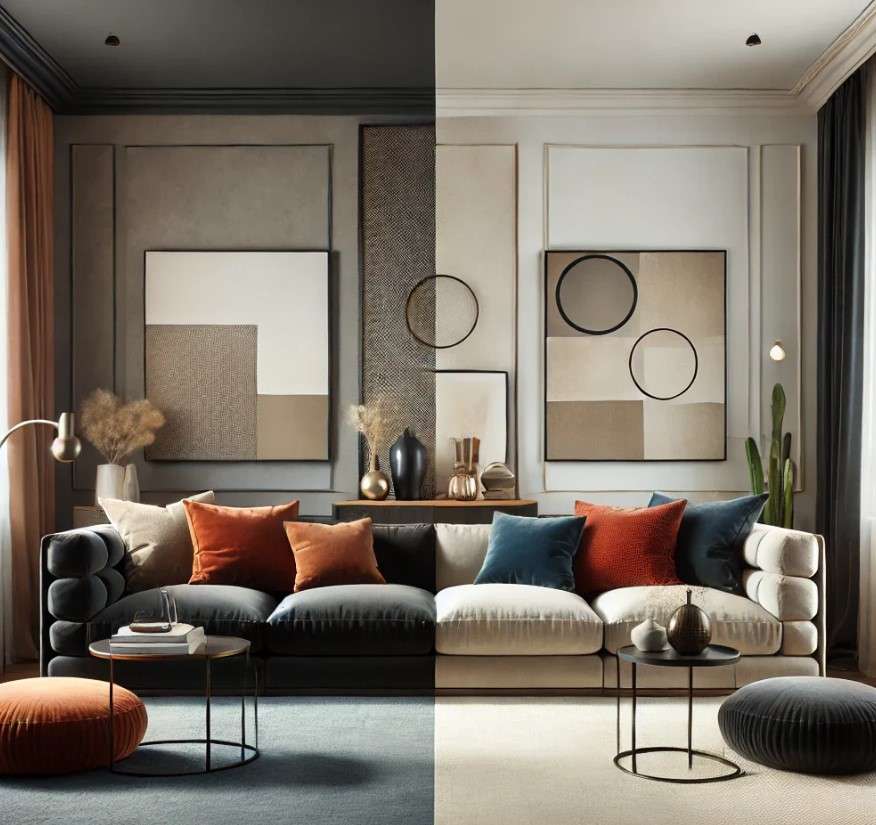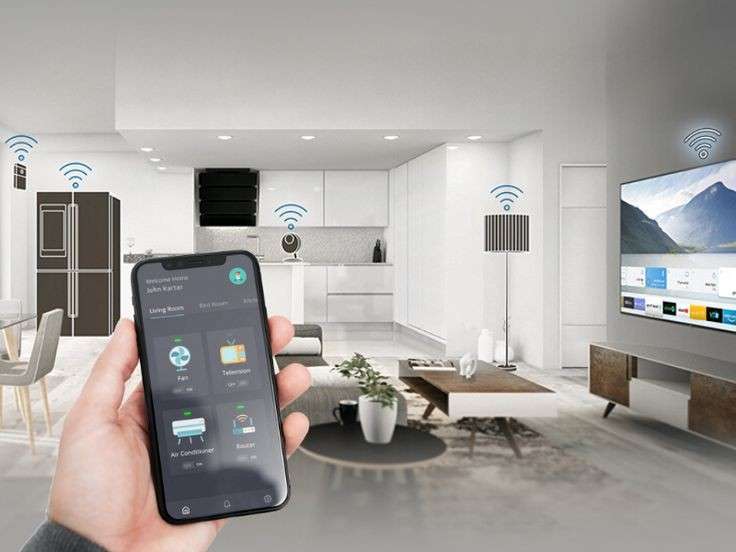When it comes to interior design, one of the most important decisions you’ll make is choosing the color palette for your home. A major aspect of this is deciding between dark and light interiors. Each offers its own unique aesthetic and vibe, but which one suits your space best? The answer depends on factors such as the size of your room, the amount of natural light it gets, and the atmosphere you want to create.
At Scale & Structure, we understand how color and light can impact your home’s design, and we’re here to help you explore the pros and cons of dark versus light interiors so you can make the best choice for your living space.

Light Interiors: Bright and Airy
Light interiors are known for creating a fresh, open, and airy feel. They can make smaller spaces feel larger and more inviting, making them a popular choice for many modern homes. But light doesn’t just mean white; it can encompass a range of soft neutrals and pastel tones that open up a room.
Advantages of Light Interiors:
- Makes Spaces Feel Bigger: Light colors, especially whites and soft neutrals, can make smaller rooms appear larger and more open. This is ideal for apartments or compact rooms where space is limited.
- Bright and Inviting: Light interiors are naturally welcoming and often create a cheerful, airy vibe. Rooms with lighter tones tend to feel more expansive and vibrant.
- Reflects Natural Light: Light-colored walls and furniture help bounce natural light around the room, making it feel brighter and more inviting even on cloudy days.
- Versatile and Timeless: Light interiors are versatile and can complement almost any design style, from minimalist to coastal. They also provide a neutral backdrop, allowing other elements (like art, accessories, or furniture) to stand out.
How to Incorporate Light Interiors:
- Use Soft Neutrals: Light shades of beige, cream, gray, or soft pastels can add warmth while maintaining an airy feel. These shades work well in living rooms, bedrooms, and kitchens.
- Mix with Light Woods: Light wood furniture and flooring add warmth and texture to the space without overwhelming the room’s brightness.
- Add Pops of Color: If you love color but want to maintain a light interior, consider adding accent pieces in soft hues such as blush pink, sage green, or muted blues.
Scale & Structure Tip: To avoid your space looking too sterile or flat, balance light tones with textured fabrics, natural materials, and carefully selected accessories.
Dark Interiors: Dramatic and Cozy
Dark interiors, on the other hand, create a completely different vibe. They exude sophistication, drama, and a sense of intimacy. While dark spaces might seem intimidating at first, they can be incredibly cozy and create a sense of warmth and refuge.
Advantages of Dark Interiors:
- Adds Drama and Elegance: Dark colors such as deep blues, charcoal grays, or even black can bring a sense of drama and sophistication to your home. They’re perfect for creating a stylish and luxurious feel.
- Creates a Cozy Atmosphere: Dark interiors tend to make rooms feel more intimate and cozy, ideal for living rooms, bedrooms, or libraries where relaxation is key.
- Great for Contrast: Dark walls make light-colored furniture and artwork pop, creating a high-contrast look that draws attention to key features of the room.
- Hides Imperfections: Dark tones are excellent for camouflaging minor imperfections in walls, floors, and furniture, making them perfect for high-traffic areas or older homes.
How to Incorporate Dark Interiors:
- Go for Accent Walls: If you’re hesitant about committing to an entire room in dark tones, consider using dark colors on one accent wall to create a focal point while keeping the rest of the room light.
- Pair with Light Accents: To prevent the space from feeling too heavy, balance dark tones with light-colored accents, such as light-colored furniture, rugs, or art pieces.
- Focus on Textures: Dark interiors work beautifully with a variety of textures—think velvet cushions, leather sofas, or dark wood furniture. Mixing textures can add dimension to the room.
Scale & Structure Tip: Dark colors are ideal for rooms where you want to create a moody, atmospheric space. Consider using dark tones in areas like your living room, home theater, or dining room.
How to Choose Between Dark and Light Interiors for Your Space
The decision between dark or light interiors isn’t a one-size-fits-all choice; it depends on several factors. Here’s how you can determine which style is best suited for your home:
1. Consider Room Size
- Small Rooms: If your room is on the smaller side, light colors can help make it feel more spacious and open. Avoid dark tones on the walls as they can make a room feel cramped and closed off.
- Large Rooms: In larger rooms, dark tones can create a sense of intimacy and warmth. Dark walls or furniture can help to ground the space, making it feel more inviting.
2. Assess Natural Light
- Well-Lit Rooms: Rooms that receive abundant natural light can handle darker tones without feeling too dark or oppressive. Dark colors absorb light, so if your space is already flooded with sunlight, a darker palette can add depth and character.
- Dimly Lit Rooms: For spaces with limited natural light, light colors are a better option as they help reflect and amplify the available light. You can also opt for lighter furniture and accessories to brighten up the space.
3. The Mood You Want to Create
- Relaxing and Bright: Light colors are ideal if you want to create an open, airy, and calm environment. They’re perfect for spaces like living rooms and bedrooms where you want to unwind.
- Sophisticated and Intimate: Dark interiors are great for creating a sense of luxury, warmth, and relaxation. If you’re after a cozy, dramatic look, consider incorporating deeper tones into your design.
4. Balance the Two
Sometimes, you don’t have to choose! Dark and light interiors can be combined for a balanced, dynamic space. Think light walls with dark furniture or a dark accent wall against light-toned décor. This blend of both worlds allows you to enjoy the best of both styles without overwhelming the room.
Conclusion: Choosing the Right Style for Your Home
Ultimately, whether you choose dark or light interiors comes down to your personal preferences, the size of your space, and the mood you want to evoke. Both options offer distinct advantages, and with the right approach, either can work beautifully in your home.
At Scale & Structure, we specialize in helping our clients find the perfect balance of light and dark elements to create spaces that feel both functional and beautiful. Whether you’re leaning toward a light, airy atmosphere or a dark, cozy retreat, we can help you design a room that suits your needs and style.



